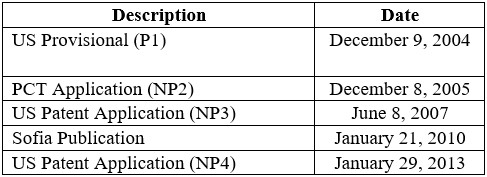The US Court of Appeals for the Federal Circuit affirmed a jury’s noninfringement verdict, finding that the district court correctly interpreted the article “a” and antecedent “said” in the asserted claims to require that a single microprocessor be capable of performing every one of the recited microprocessor functions. Salazar v. AT&T Mobility LLC et al., Case No. 21-2320; -2376 (Fed. Cir. Apr. 5, 2023) (Stoll, Schall, Stark, JJ.)
Joe Salazar owns a patent directed to technology for wireless and wired communication, including command, control and sensing systems for two-way communications. In 2016, Salazar sued HTC, alleging that HTC infringed the patent by selling certain phones that allegedly embodied the asserted claims. A jury returned a verdict finding that HTC did not infringe. In 2019, Salazar sued AT&T, Sprint, T-Mobile and Verizon (collectively, the Telecom Providers) asserting the same patent against the same HTC products. HTC intervened, arguing that the accused products did not infringe. The district court severed HTC and stayed that portion of the case.
At claim construction, the parties disputed limitations that required “a microprocessor for generating, . . . said microprocessor creating . . . , a plurality of parameter sets retrieved by said microprocessor . . . , [and] said microprocessor generating.” The essence of the dispute was “whether the claims require one microprocessor that is capable of performing the recited ‘generating,’ ‘creating,’ ‘retrieving,’ and ‘generating’ functions.” The district court answered the question in the affirmative and construed the term to mean “one or more microprocessors, at least one of which is configured to perform the generating, creating, retrieving, and generating functions.” The district court further reasoned that “at least one microprocessor must satisfy all the functional (and relational) limitations recited for ‘said microprocessor.’” At trial, the jury found that the accused products did not infringe and that the patent was not invalid. Salazar appealed, and the Telecom Providers cross-appealed.
Salazar argued that the district court erred in construing “a” microprocessor and “said” microprocessor and that the court should have interpreted the claim terms to require one or more microprocessors, any one of which may be capable of performing the “generating,” “creating” and “retrieving” functions recited in the claims. Put another way, in Salazar’s view, the correct claim construction would encompass one microprocessor capable of performing one claimed function and another microprocessor capable of performing a different claimed function, even if no single microprocessor could perform all of the recited functions.
The Federal Circuit rejected Salazar’s argument. Generally, the indefinite article “a” means “one or more” in open-ended claims containing the transitional phrase “comprising.” An exception to the general rule arises where the language of the claims themselves, the specification or the prosecution history necessitates a departure from the rule. The Court found that while the claim term “a microprocessor” does not require that there be only one microprocessor, the subsequent limitations referring to “said microprocessor” require that at least one microprocessor be capable of performing each of the claimed functions. The Court further explained that [...]
Continue Reading
read more


 Subscribe
Subscribe



